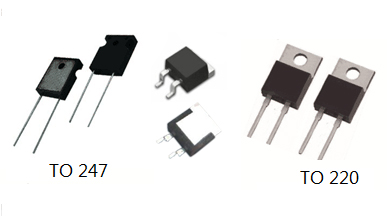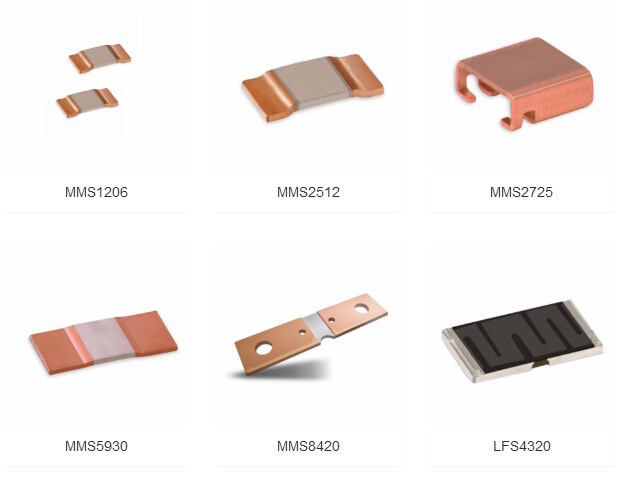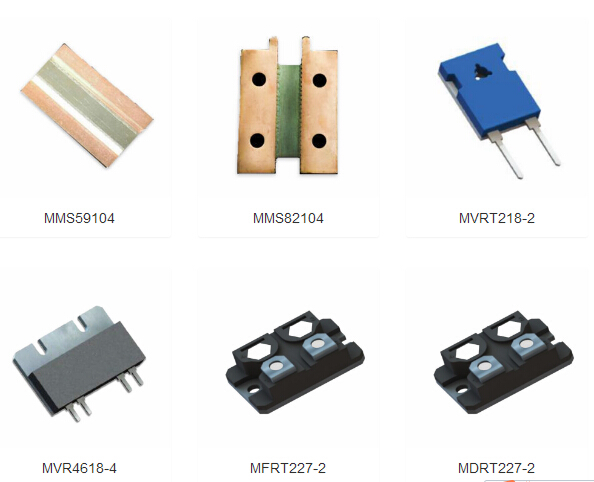Position:Home » Technical Articles
Why the Use of the Plug-In Resistor is Much Larger than the Amount of the Chip Resistor?
Writer:Microhm Page View:Date:2018-12-19
Plug-in resistors and chip resistors are two very important resistors. Both resistors are used in many applications, but it is not difficult to find that the shipments of these two resistors are quite different. Usually the use of plug-in resistors is several times the chip resistor. Why is this happening because of their price or because of their package mode? Let me analyze it carefully.

In fact, engineers who have applied plug-in resistors are actually very simple. This is because of the packaging process of the plug-in resistors and chip resistors. More people use the plug-in resistors better than the chip resistors. as follows:
First, the plug-in resistor can better adapt to the PCB version
After the precision resistance of the chip is soldered to the PCB, it will be squeezed or stretched by the thermal expansion and contraction of the PCB, thereby transferring stress to the resistance layer, affecting the resistance and long-term stability of the resistor. In some cases where the temperature changes very severely, the problem of breakage may even occur. The resistance of the pin releases the stress transmitted by the PCB through the elongated solder tail, so there is no problem of the chip resistance.

Second, the environmental adaptability of the plug-in resistor is good: moisture, sulfur, salt spray, etc. will have an effect on the resistance of the resistor. The precision resistance of the chip is generally weaker than the plug-in resistance, so the ability to isolate the external environmental stress is not as good as the plug-in resistance. The general pin precision resistors are epoxy or plastic. Some fully sealed plug-in resistors are internally filled with oil, completely ignoring the influence of external environmental factors on the resistance value. This resistor can be used as a secondary measurement standard.
Third, the soldering resistance of the plug-in resistor is good: after the impact of soldering heat, the resistance value of the plug-in resistor is significantly smaller than the chip resistor. The soldering height of the precision chip resistor is generally recommended to be less than 30% of the height of the resistor soldering foot. For the installation of the precision plug-in resistor, we also recommend at least 1mm space between the PCB and the PCB to avoid the tensile force caused by the thermal expansion and contraction of the PCB.

Therefore, the plug-in resistor has an overwhelming advantage. The plug-in resistor is widely promoted in the market. However, with the advancement of technology and technical improvement, a patch-precision foil resistor of a flexible solder fillet can take advantage of the advantages of the chip resistor and the plug-in resistor effectively respond to the effects of various stresses. This type of resistor has the basic advantage of plug-in resistors, but this is expensive because of the price, so plug-in resistors still have a very large market application advantage.

First, the plug-in resistor can better adapt to the PCB version
After the precision resistance of the chip is soldered to the PCB, it will be squeezed or stretched by the thermal expansion and contraction of the PCB, thereby transferring stress to the resistance layer, affecting the resistance and long-term stability of the resistor. In some cases where the temperature changes very severely, the problem of breakage may even occur. The resistance of the pin releases the stress transmitted by the PCB through the elongated solder tail, so there is no problem of the chip resistance.

Third, the soldering resistance of the plug-in resistor is good: after the impact of soldering heat, the resistance value of the plug-in resistor is significantly smaller than the chip resistor. The soldering height of the precision chip resistor is generally recommended to be less than 30% of the height of the resistor soldering foot. For the installation of the precision plug-in resistor, we also recommend at least 1mm space between the PCB and the PCB to avoid the tensile force caused by the thermal expansion and contraction of the PCB.

Therefore, the plug-in resistor has an overwhelming advantage. The plug-in resistor is widely promoted in the market. However, with the advancement of technology and technical improvement, a patch-precision foil resistor of a flexible solder fillet can take advantage of the advantages of the chip resistor and the plug-in resistor effectively respond to the effects of various stresses. This type of resistor has the basic advantage of plug-in resistors, but this is expensive because of the price, so plug-in resistors still have a very large market application advantage.
Keywords:Plug-In Resi
Latest News
- Resistor's role in measuring and correcting LED,,,
- Single through-hole resistors' characteristics ,,,
- Why shunt resistors for current sense applicati,,,
- Metal-film resistors with small size, high resi,,,
- 36W High-Current Shunt Resistors MMS8420,,,
- 1W Surface Mount Resistor MPR1206,,,
- An Overview of Microhm Electronics' Resistor Pr,,,
- More anti-sulfur resistors used in harsh envir,,,
- Resistance changes with temperature,,,
- 140W TO247 High Power Heatsinkable Resistor,,,
- MMS5930 is ideal for current sensing in industr,,,
- Shunt resistors selection for engineers' design,,,
- Considerations for choosing precision resistors,,,
- Ceramic Encased Cement Resistors NWH Series for,,,
- Resistors for Passive Balancing in Battery-Pow,,,
Hot Articles
- Microhm will take part in 10th Automotive World,,,
- Thanks for Visiting Microhm's Booth E5-5706 in ,,,
- Resistors in Short Supply: Blame Cars,,,
- New lunch: High Power Precision Shunt Resistor,,,,
- How to Test a Resistor,,,
- Innovative Technology, Future Electric: Electri,,,
- What is Precision Resistors?,,,
- SMD Resistors Sizes and Packages,,,
- The Construction and Features of Metal Film Res,,,
- What is a TO-220 Resisor?,,,
- Hot Selling Products: Precision Shunt Resistors,,,
- How to Calculate the Equivalent Resistance Valu,,,
- What is a Fixed Resistor?,,,
- Resistors in LED Circuits,,,
- Resistors Types and Materials Overview,,,
Resistance applications
- The Measurement Accuracy of Automotive Shunt is,,,
- Select the Right Resistor for Harmonic Filterin,,,
- The Main Application for High Precision and Low,,,
- The Four Important Functions of Alloy Resistors,,,
- Miniature future for passive electronic compone,,,
- Surface Mount Resistor's Size and Package ,,,
- Precision Resistors' Construction and TCR,,,
- Heater Blower Motor Resistor in Air Conditioner,,,
- Urbanization Development Bringing the Transform,,,
- Carbon Film Resistors' Features and Application,,,
- Difference Between High Precision Resistors and,,,
- BMS for New Energy Vehicle,,,
- Shunt Resistor MMS8420 for High Current Stable ,,,
- Why Zero-Ohm Resistors?,,,
- Industrial Roberts Applied to Solar Photovoltai,,,
